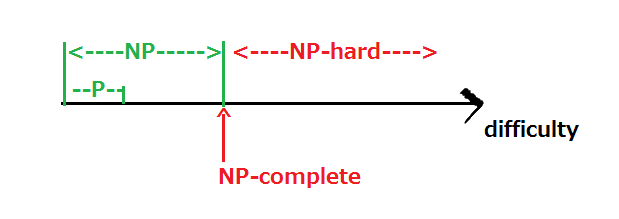P NP NP-complete NP-hard
Some notes when learning complexity theory:
P: Problems can be solved in polynomial time. For example, multiplication, sort...
NP: The result of NP problem can be verified in polynomial time. For example, sodoku, it's hard for us or computers to find solutions for some 9X9 sodoku problems, and for n x n(n>=9), it gets more difficult. But, it's quite easy to verify the result, to get a YES or NO answer.
Obviously, P NP, cause for P problems, it's fast to solve, and also fast to verify results.
NP-complete: X ∈ NP-complete <=> X ∈ NP AND X ∈ NP-hard. For example, Super Mario Problem, 3-SATS(the first proved NP-complete problem.), and 3-dimensional matching.
NP-hard: It's at least as hard as every problem in NP. If Y ∈ NP-hard, for every X ∈ NP, X can be reduced to Y in polynomial time. That is to say, if Y could be solved, X will be reduced to Y and could be solved, too. For example, chess.
The following graph shows a relationship between these four problems.
How to prove X is a NP-complete problem?
First, prove X ∈ NP. Two ways: exist one nondeterministic polynomial time algorithm or there is some verifier given a polynomial size certificate.
Second, prove X ∈ NP-hard: choose a NP-complete problem Y, prove Y can reduced to X. ( cause every Z ∈ NP could reduced to Y, if Y can reduced to X, such that Z can reduced to X. )
Learning is interesting! hhh

